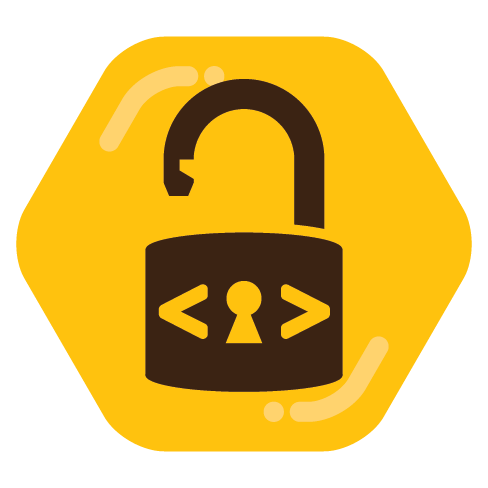

I use a 1tb ssd for the os/apps with my raid5 strictly for storage. Kinda nice if the os needs to be reinstalled or I want to migrate the raid cluster.


I use a 1tb ssd for the os/apps with my raid5 strictly for storage. Kinda nice if the os needs to be reinstalled or I want to migrate the raid cluster.
You misunderstand, we’re in the mirror universe.
Good point, that is a valid way to do it sometimes, but it’s extremely situational and trying to do that for everything would be absolute nonsense.
I can understand telling you not to use break and continue if the point is to teach you to think about different ways to solve problems, but saying it’s because “it makes the code harder to read” is bullshit. Readable code flow is important, but if using those makes your code too hard to read, your problem is most likely that you’ve just written shitty code.
To get really into the technical weeds, what break and continue boil down to in the compiled machine code is a non-conditional branch instruction. This is just going to move the execution pointer to a different location in memory. Other keywords, such as if, elif, and else, will compile down to conditional branch instructions. Basically the same thing, but they have the added cost of having to evaluate some data to see if the branch should happen at all. You can achieve the same things with both, but the high level code might need to look different.
For instance, if you’re in a loop, continue will let you skip the rest of the code in the loop to get to the next iteration. Not a huge deal to instead make the entire code block conditional to skip it. However, the break keyword will let you exit the loop at any point, which is more complicated to deal with. You would have to conditionalize your code block and force the looping condition to something that would stop it on the next iteration. If you ask me, that has the potential to be much more complicated than necessary.
Also, good luck using switch without any breaks, but I’m guessing that’s not quite what your teacher had in mind.
In short, just go with it for now. Be creative and find a way to make it work to your teacher’s liking, but always try to be aware of different ways you can accomplish a task. Also, I don’t know what language you’re using, but if you’re in C/C++ or C# and you feel like getting really cheeky, it doesn’t sound like she disallowed the use of goto. It’s kinda like break with fewer safeguards, so it’s super easy to write broken code with it.
Late 30s here and I beat that level for the first time very recently. My mind was blown when I learned that was not the final level of the game.


If anyone demands I implement some feature into one of my open source projects that I either don’t have time for or don’t want to do, my response is one of the following:
But thankfully, my projects don’t have a very wide audience, so requests/demands are rare.


Wait, are you telling me that business ethics are actually a real thing? I thought somebody made that up as a meme. Every corporate executive I’ve ever worked for has been a borderline, if not full blown, sociopath obsessed with nothing more than getting richer at everyone else’s expense. Maybe they all skipped that class?


I honestly despise influencers, but I’m ok with them doing something legitimately good for a change.


I loved Xillia! I keep hoping against all odds they’ll remaster it for modern platforms like Symphonia or Vesperia.
I do see a decent amount of activity on it. Full disclaimer, I am not a security expert. I know just enough to be dangerous. But, I see at least a few connection attempts from different IPs about every day. The top 3 countries of origin are China, Russia, and Brazil (based on the reverse DNS, but it’s possible some are using VPNs to hide their origin). My impression is they’re all bots that just go through a list of IP addresses, attempting to connect to the standard ssh port, then guessing the username and password. What I’ve found is they usually go through a list of likely ssh ports until one of them connects. Having the default port open to only the honeypot means they usually establish the connection, then leave it at that, so my real ssh port never gets hit. I kinda think of it like scambaiting, where I’m just wasting time they might otherwise spend trying to break into someone else’s real ssh server.
I have https open along with a non-standard port for ssh. Just for fun, I have the standard ssh port open, but redirecting to a Raspberry Pi running a honeypot. It’s fun to mess with foreign bots trying to access my network.
I’ve been working on a single bug for nearly 3 weeks. I think my “I’m getting closer to understanding this” is starting to lose credibility with my team.


Could also have been one of the devs who leaked it. Lots of us keep copies of the source for stuff we work on, so they may have figured it’s been long enough that no one would care if it leaked. However, I haven’t looked at it yet, but I imagine it would be most problematic legally if it contained proprietary 3rd party code. Leaking that could land someone in hot water.
I’m still fucking with the apache configs (I fucking hate apache…). As someone with no docker experience whatsoever, are there any getting started guides you would recommend for someone looking to make the switch?
In my case, I use a PCI card with an m.2 slot for my OS drive. I lose a PCI slot, but I already had a few to spare.